
With cold and windy days, winter in Virginia Beach is generally mild, but it’s important to be prepared for occasional cold snaps, snow, and stormy weather conditions. Homeowners will benefit from this guide on nine tips for winter lawn care in Virginia Beach.
To keep your lawn healthy, there are a few steps that homeowners can take to brace themselves — and care for the lawn — when winter is coming. These tips will help you care for your grass during its dormancy period so it can get off to a running start when spring arrives.
- Test Your Soil pH
- Fertilize
- Mow
- Rake
- Avoid Foot Traffic
- Water
- Take Care of Your Lawnmower
- Apply Mulch
- Late-Season Sod Establishment
1. Test Your Soil pH
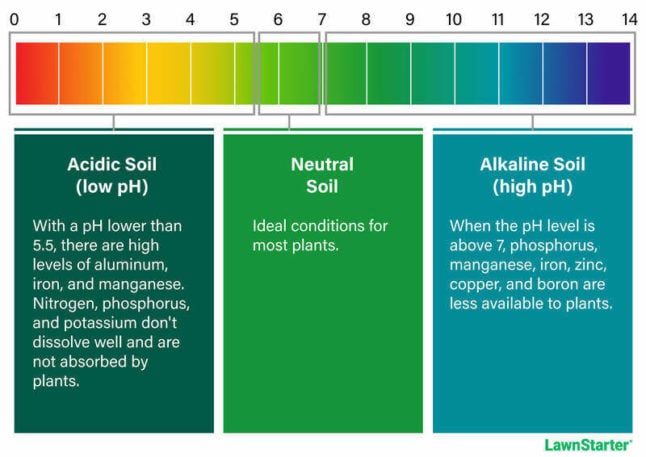
Testing your soil is of utmost importance if you want to keep a healthy lawn, and winter is the perfect time to do so. The results will show you the fertility conditions of the soil and pH levels so you can amend the soil accordingly.
So before applying any fertilizer, lime, or other soil amendments, get your soil evaluated by contacting your local Extension office or buying a test from a local nursery.
In either case, follow these soil sample preparation steps to ensure accurate results:
- You will need: A plastic bucket and a rust-free shovel and trowel
- Dig holes of about 6 inches to extract the soil sample, taking around one cup of the dirt per sample.
- Take samples from multiple random areas of your lawn, going in a zigzag pattern and getting at least 10 different samples.
- Avoid areas with fertilizer or chemicals.
- Mix the soil thoroughly to obtain a final sample, making sure it is dry and without any clumps or rocks.
2. Fertilize
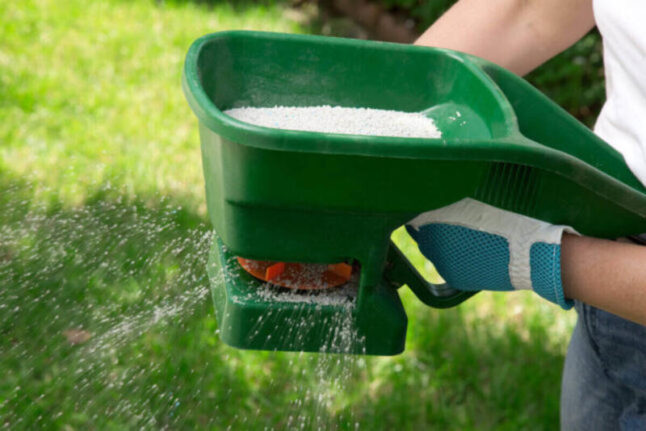
A late fall application of a slow-release fertilizer is necessary for your cool-season grass (such as tall fescue) to grow, store food, and strengthen its roots for winter. And if your soil is sandy, a potassium application might be necessary as well. A winterizer fertilizer will provide your lawn the nourishment it needs for the winter, helping to prevent snow mold and other diseases.
If your lawn, however, consists of a warm-season grass type (Bermudagrass, St. Augustinegrass, or Zoysiagrass), fertilize in the late spring. You can prepare warm-season lawns for winter dormancy by ensuring the nutrient levels are adequate and by following the other tips in this article.
3. Mow
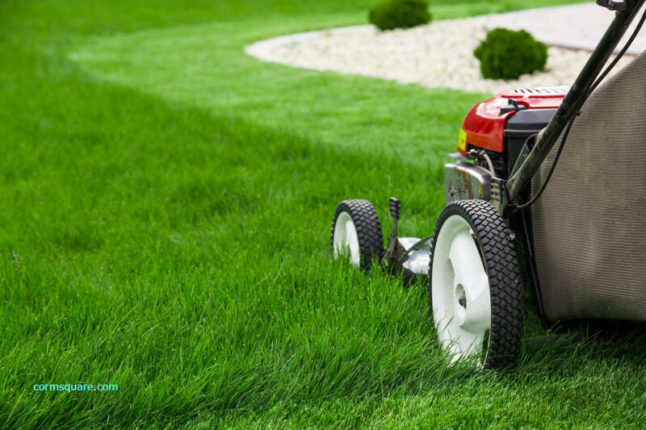
When winter comes, the last thing you will want in your lawn is a matting problem, which can make the grass susceptible to diseases such as snow mold. To prevent this, continue mowing your lawn until it stops growing.
The recommendations for the final mow of the season vary slightly according to the grass type:
- For cool-season grasses, keep mowing at the same height you’re used to, but never cutting off more than one-third of the total canopy. However, if you’re concerned about snow mold, you might want to do a shorter last cut before winter.
By mowing at 2 to 2.5 inches high, or on the lower end of the recommended range, you can prevent the leaves from falling over and trapping excess moisture, which could cause mold and diseases in your lawn. - For warm-season grasses, the ideal is to mow at a slightly higher height within its recommended height range. Cutting too short going into winter may impair photosynthesis, making your lawn more vulnerable to winter damage.
4. Rake
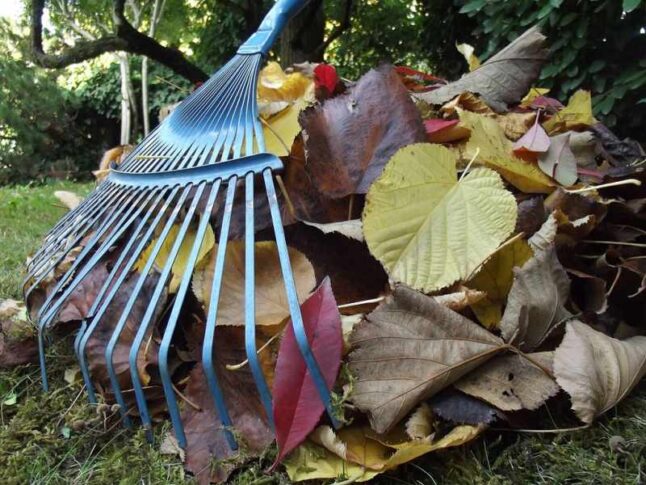
Rakes are one of the essential lawn care tools for homeowners to have, being useful all year round. Throughout the winter, especially, debris accumulation (leaves, small branches, snow) can:
- Block sunlight and air from getting into your grass and soil
- Trap moisture in the soil, creating a perfect environment for mold and other diseases
By raking the lawn, you clean up this clutter layer and optimize your lawn’s access to sunlight, which will help it get through the winter.
An extra tip: If your lawn area is large, using a leaf blower will make it easier for you.
5. Avoid Foot Traffic
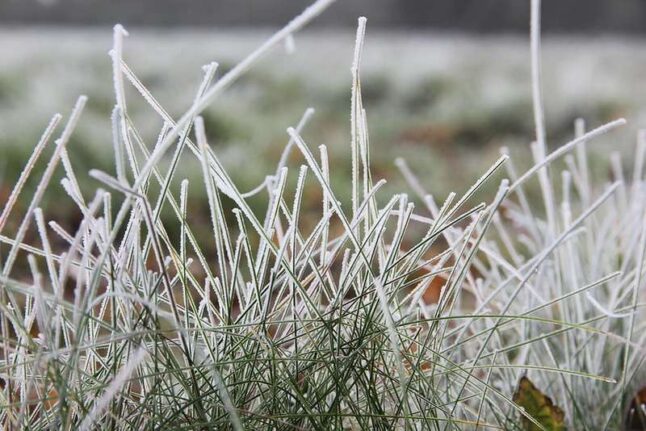
Try to stay off your lawn as much as possible during the winter months. Here are some of the dangers of foot traffic during winter:
- It can damage or even kill your grass, especially if it is frozen or covered in snow.
- It may result in dead spots appearing in early spring, ruining a beautiful lawn.
Lawns may become damaged because, during winter, warm-season grasses are in their dormancy period, when they are not able to heal properly from damage. Here are some of the things you can do to protect your lawn during its long winter’s nap:
- Don’t walk on the grass, especially if it’s frozen.
- Never place any heavy equipment on the lawn (and yes, unfortunately, holiday decorations are also out of the question).
- Pets and kids, although small and lightweight (and cute), can also damage the lawn by walking on it, so you’ll have to keep them away as well.
6. Water
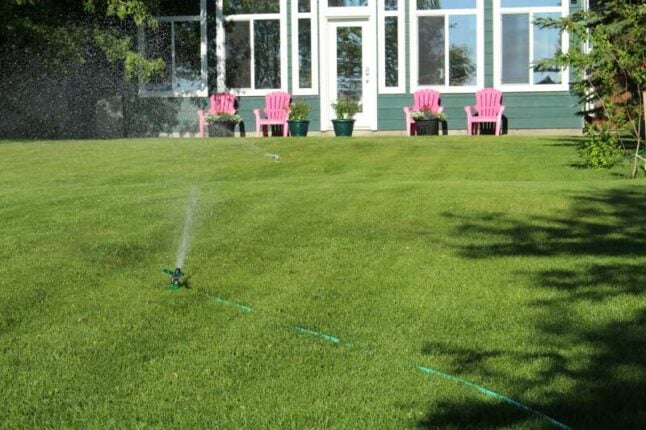
If the rains during fall weren’t enough, give your lawn a deep watering before the ground freezes. This will help the root system to stay healthy and avoid dehydration during the winter months. You can also water during warmer days in the months of January, February, and March.
When Should I Stop Watering the Lawn?
For the Virginia Beach region, you should continue to water the lawn throughout fall and even on some occasions during winter, if you notice the grass is too dry. You may have to water with an above-ground sprinkler, though, since you should winterize your sprinkler before the first frost.
Here are some steps to winterize your irrigation system:
- Wait until fall to winterize your sprinklers.
- Inspect the system and check for leakages or damage.
- Turn off the water supply and the timer.
- Drain the excess water: This is the most important step to avoid freezing during winter.
- Insulate everything above ground to protect from freezing as well.
7. Take Care of Your Lawnmower
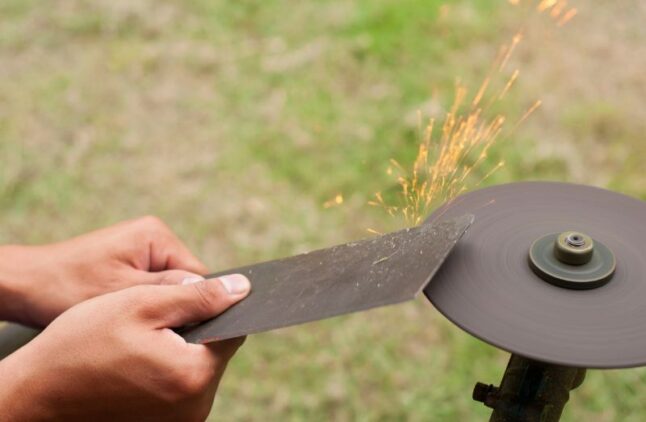
Yes, your lawn mower must also be winterized. All summer long, you use your lawnmower to cut the lawn, and while you may keep it clean and in good condition, it still has some wear and tear. To winterize your lawnmower, follow these steps:
- Burn off remaining fuel so you won’t have any clogging.
- Change the spark plug: This is something that has to be done annually. Since in winter you won’t have to use the lawnmower, it’s a perfect opportunity to do so.
- Sharpen and balance the blade so your lawnmower functions at its best when spring in Virginia Beach comes around.
- Deep clean and check if the other parts of the equipment need maintenance: tires, belt, pull cord, and oil.
- Store it and protect the lawnmower by tossing a tarp over it. You can also place mothballs nearby to prevent mice from chewing on wires.
8. Apply Mulch
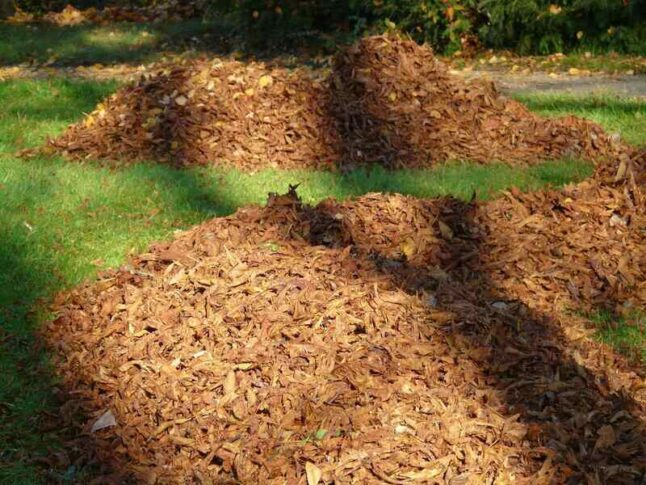
Applying mulch is also a great way to care for your lawn in winter. Mulch will help your lawn not just survive, but thrive. Here are some of the reasons:
- It retains moisture in the soil and helps prevent erosion
- Organic mulch also provides nutrients to your lawn
- It also stabilizes the soil temperature, keeping it warmer during the colder winter days.
Pro tip: Use grass clippings or fallen leaves as organic mulch, which is a great way to utilize organic material that would normally go to waste. To avoid leaf buildup, mow often to mulch grass and leaves into the lawn during fall.
These organic materials contain nutrients that will enrich your soil: a true win-win! When applying grass clippings, make sure all the surface is covered evenly and has no clumps, which can smother the grass.
9. Late-Season Sod Establishment
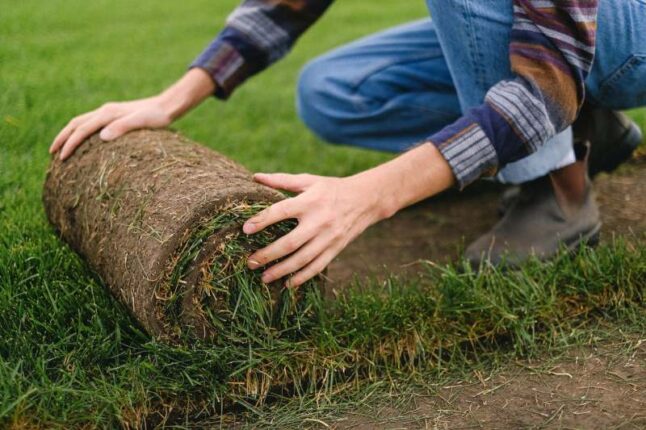
Winter is not a good time to overseed your lawn. But not everything is lost: What you can do instead is establish a lawn from sod even in late November and early December. Here are some reasons why a late-season sod establishment is a good option for homeowners:
- Watering needs are not as critical as they usually are during summer.
- The moisture in the soil helps prevent sod desiccation problems.
- The cooler temperatures are optimal for root development in cool-season grasses. Root development will be slower in warm-season grasses, though, so keeping the turf evenly moist is critical throughout the winter.
And the good news is that this method works for both warm-season and cool-season grass types in Virginia Beach. Sod establishments also come with practical advantages when compared to seed establishments:
- Immediate coverage that gives you an instantly beautiful lawn
- Erosion control and soil stabilization
- Diminished effects of weed growth, meaning less stress for the homeowner
FAQ
No. During wintertime, one should avoid any weight or foot traffic on the grass, which are intrinsic to the aeration process. Additionally, during dormancy, the grass won’t be able to heal properly, which could affect the health of your lawn.
• For cool-season grasses (such as tall fescue), aeration should be done during fall.
• For warm-season grasses (such as Bermudagrass, Zoysiagrass, or St. Augustinegrass), aerate in late spring and early summer.
Virginia Beach is in the USDA hardiness zone 8a and has an average snowfall of just 8.2 inches. Since it’s by the ocean, humidity levels are high. During winter months, the average low temperatures are around 35 F.
Here are the best lawn maintenance chores for winter:
• Rake the lawn to remove fallen leaves and debris.
• Avoid foot traffic on a frozen lawn.
• Water in late winter on warmer days if rains aren’t sufficient.
• Apply mulch to ornamental beds to minimize large fluctuations in soil temps.
Final Thoughts
By following these lawn care tips, you are prepared to keep your lawn in the best possible condition to endure winter. But if you still need a hand, don’t hesitate to contact a trusted Virginia Beach lawn care service for a free quote.
Main Photo Credit: Ferry Plantation House / Rlevse / Wikimedia Commons / CC BY-SA 3.0